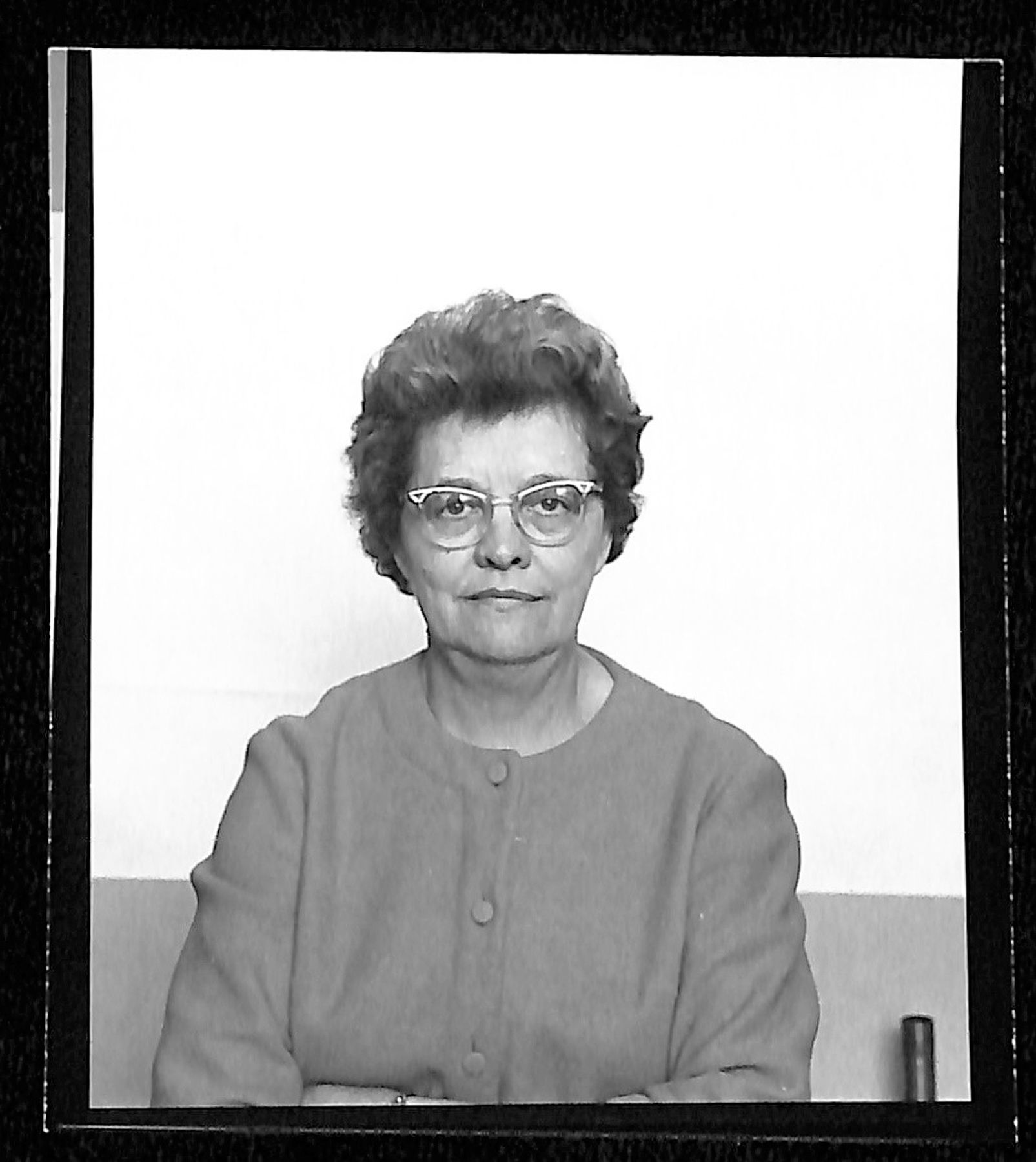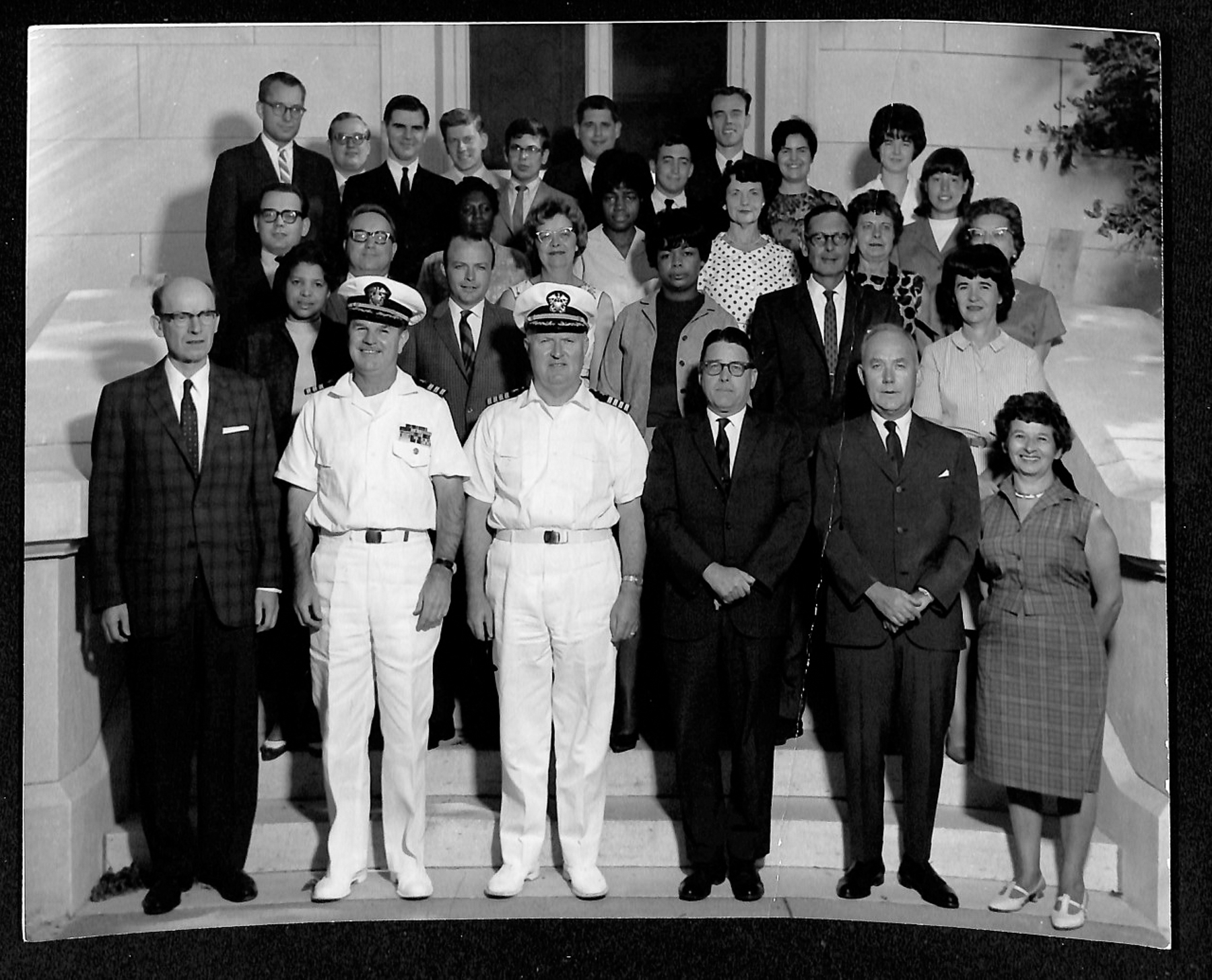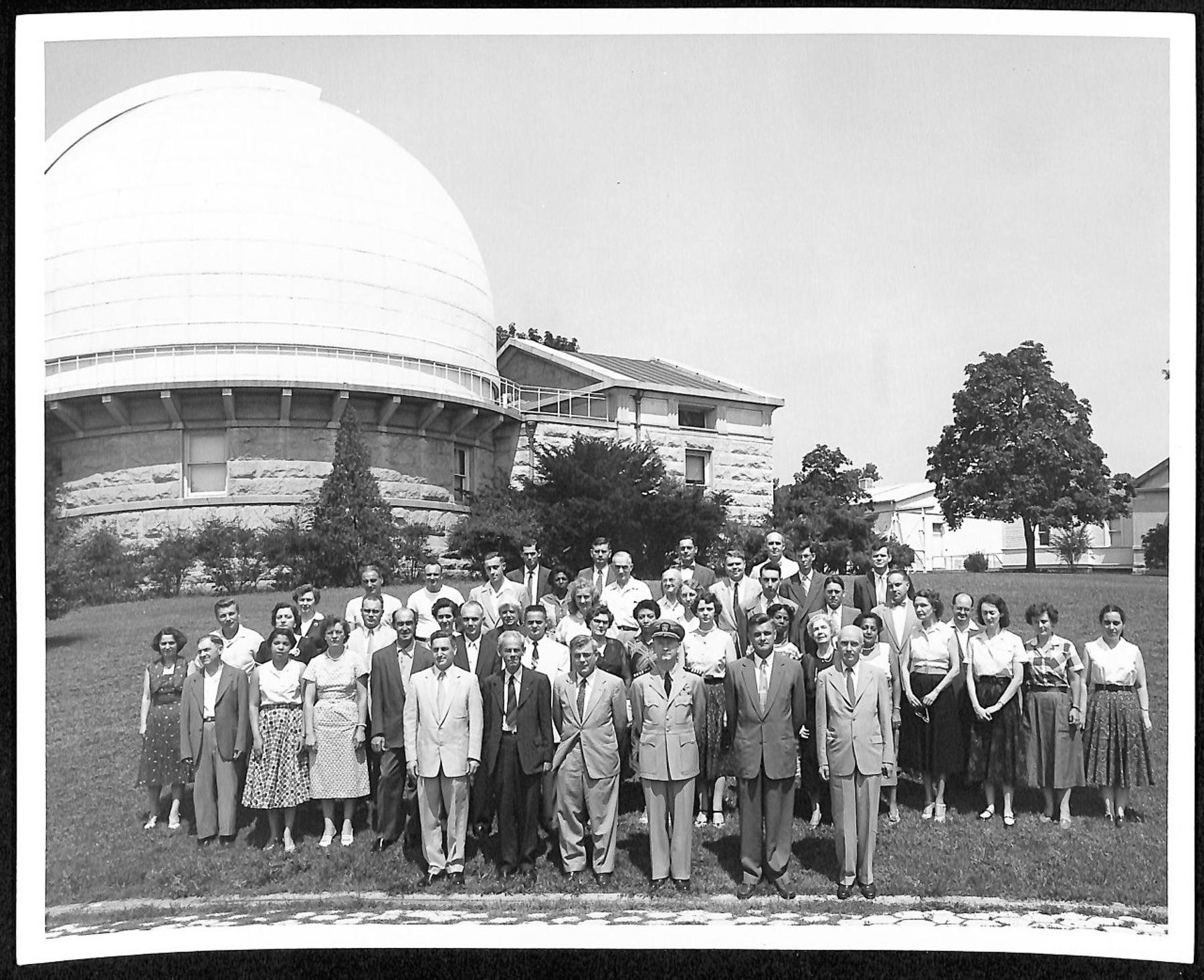
If you look at a map, it’s not that far a distance between the village of Goehner and Crete, Nebraska. But for Julena “Julie” Theodora Steinheider Duncombe ‘32, it was a big step from her hometown toward the stars.
Because 13 years after graduating, she would be in Washington, D.C., working as a mathematician and astronomer for the U.S. Naval Observatory (USNO). She was the first woman to use the USNO’s 6-inch transit circle, which served as one of the workhorses of American astronomy for nearly a century.
Education at Doane, and her early career as a teacher
Julena was the first of four Steinheider siblings to attend Doane; her brothers Witt ‘34, Frederick ‘38 and Robert ‘48 also graduated from the college (she also had a fourth brother, Roy, who did not attend the college.)
At Doane, she studied mathematics and astronomy under Dr. Julia May Hawkes, who likely left an impression on her as an early role model. Hawkes was not only one of the first women to receive a doctorate in astronomy, but the first faculty member at Doane to hold a Ph.D.
Julena didn’t immediately pursue a career in the fields she studied. Instead, for at least nine years, she shared her love of learning with students in one-room schoolhouses near Minatare and Scottsbluff.
An obituary published by the American Astronomical Society stated that during this period, Julena prepared lunches for students who couldn’t afford more than popcorn. This was at the height of the Great Depression, and the Steinheider family contributed assistance.
During World War II, Julena moved further west. For several years, she taught high school courses at Heart Mountain Relocation Center, an incarceration camp in Wyoming that housed more than 10,000 persons of Japanese descent forcibly relocated from their homes following Executive Order 9066.
“Students who had geometry with Juliana [Julena] Steinheider remembered their early sessions,” wrote Katsumi Hirooka, in an article looking back at the history of the camp’s high school published in the Heart Mountain Sentinel on August 12, 1944. “Everyone was practically sitting on top of each other.”
The article, available through the Library of Congress, said 50 students crowded into a 16 by 24 foot room. But Hirooka didn’t elaborate on whether that was due to their enthusiasm for geometry. Another news brief from the Sentinel shared that, to some degree, Julena helped with a troop of Camp Fire Girls.
Working at the USNO and Yale University
In 1945, Julena headed to the east coast and began employment with the USNO. As an observer and mathematician working on the six-inch transit, she spent her time both at the eyepiece of a telescope and at a desk. The transit was mounted on a north-south meridian, and recording the orbits of celestial bodies as they passed into and out of the telescope’s viewfinder was a major part of Julena’s work.

Just as important a job was cataloging and analyzing those findings for errors. At this time, early computers were just beginning to make waves in nautical and air navigational charts. Punched-card tabulating machines were streamlining and automating the process of solving difficult equations to determine orbits, and Julena was adept at both using and, to some extent, repairing the machines.
Over time, she made the acquaintance of a fellow astronomer and mathematician designated to the six-inch transit — Raynor Duncombe. They worked the night shift together, making observations and running tabulator machines that required around-the-clock attention.
Which is probably one heck of a meet-cute in the astronomy field. Within three years, the two were married in Julena’s hometown, Goehner, Nebraska.
After the wedding, the Duncombes moved to New Haven, Connecticut, where Ray had received an offer to set up a computer laboratory at Yale University. Together, they introduced punched-card equipment to the Yale astronomy department. And as Ray pursued his doctorate on top of establishing the lab, Julena worked on Yale’s astrographic catalog, analyzing the existing data and reducing errors.
Leading discoveries at the Nautical Almanac Office
They returned to Washington, D.C., in 1950 to work at the Nautical Almanac Office (NAO), a division of the USNO that took the data gathered from observations and created catalogs of celestial bodies, and multiple publications sharing those findings. Initially, the Nautical Almanac was primarily used for navigation at sea. The increased use of aircraft during WWII created a demand for air almanacs so that pilots could fly by starlight.
But the value of being able to accurately calculate orbits became even greater in the mid-to-late 1950s. Several employees of the NAO, including Ray, were called to participate in the Vanguard Project — which tracked the Sputnik satellite, launched in 1957. Ray also consulted on early manned space missions, and later served as both assistant director and director of the NAO.
Julena worked at the NAO until her retirement in 1973. During 23 years, she contributed to the recording of more than 150 star catalogs in the office, using a tabulating machine and, according to the American Astronomical Society obituary, approximately 1.5 million punch cards.

She and others in the office discovered and corrected errors, and Julena was in charge of producing solar and lunar eclipse predictions and maps. Solar and lunar eclipse paths up to the year 1990 were likely charted by Julena and her colleagues at the NAO.
Julena was also recognized throughout the astronomy and mathematics field, as a fellow of the American Association for the Advancement of Science, a member of the American Astronomical Society, the Division of Dynamical Astronomy and the Institute of Navigation.
Retirement and an enduring legacy
In 1975, Ray also retired from the NAO, and the family moved to Austin, Texas. He taught at the University of Texas until the 1990s, and they split their time entertaining friends and family in both Austin and at a home in North Carolina. Together, they produced the journal Celestial Mechanics.
But time caught up with Julena first. She passed away on Sept. 13, 2003, just eight days before her 92nd birthday.
Throughout her life, she held a place for her alma mater. A memorial scholarship exists in her name, created after her death in 2003 by Ray through a $50,000 donation. For years to come, students studying mathematics or physical sciences at Doane will benefit from the endowment.
The couple was invited to interview for an oral history project with the USNO in 1988, and unfortunately, Julena doesn’t share much.
“That does it for you,” the interviewer, Steven Dick, says to Ray. “I haven’t talked to your wife very much.”
“Well, I didn’t have that much to do,” she replied, despite the conversation discussing her work in operating the punched-card computers, producing and publishing the Air and Nautical Almanacs, extensive work in calculating eclipses, creating maps and charts — even tracking sunspots.
Definitely not much to do.
At the end of the oral history, the interviewer asks Julena: “Is there anything else you’d like to say? We’re all running out of steam here.”
“I think not, except I enjoyed doing what I did,” Julena replied.

